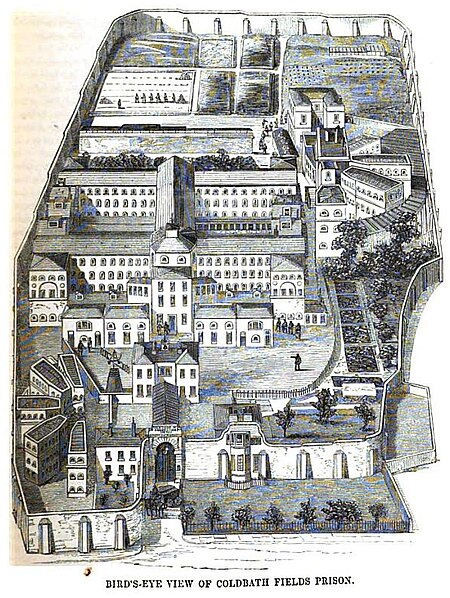Coldbath Fields Prison
1794 establishments in England1885 disestablishments in the United KingdomBuildings and structures in ClerkenwellDebtors' prisonsDefunct prisons in London ... and 2 more
Demolished prisonsFormer buildings and structures in the London Borough of Islington

Coldbath Fields Prison, also formerly known as the Middlesex House of Correction and Clerkenwell Gaol and informally known as the Steel, was a prison in the Mount Pleasant area of Clerkenwell, London. Founded in the reign of James I (1603–1625) it was completely rebuilt in 1794 and extended in 1850. It housed prisoners on short sentences of up to two years. Blocks emerged to segregate felons, misdemeanants and vagrants.
Excerpt from the Wikipedia article Coldbath Fields Prison (License: CC BY-SA 3.0, Authors, Images).Coldbath Fields Prison
Calthorpe Street, London Clerkenwell (London Borough of Islington)
Geographical coordinates (GPS) Address Nearby Places Show on map
Geographical coordinates (GPS)
| Latitude | Longitude |
|---|---|
| N 51.525277777778 ° | E -0.11277777777778 ° |
Address
London Central Mail Centre (Mount Pleasant Mail Centre)
Calthorpe Street
WC1X 9HX London, Clerkenwell (London Borough of Islington)
England, United Kingdom
Open on Google Maps











